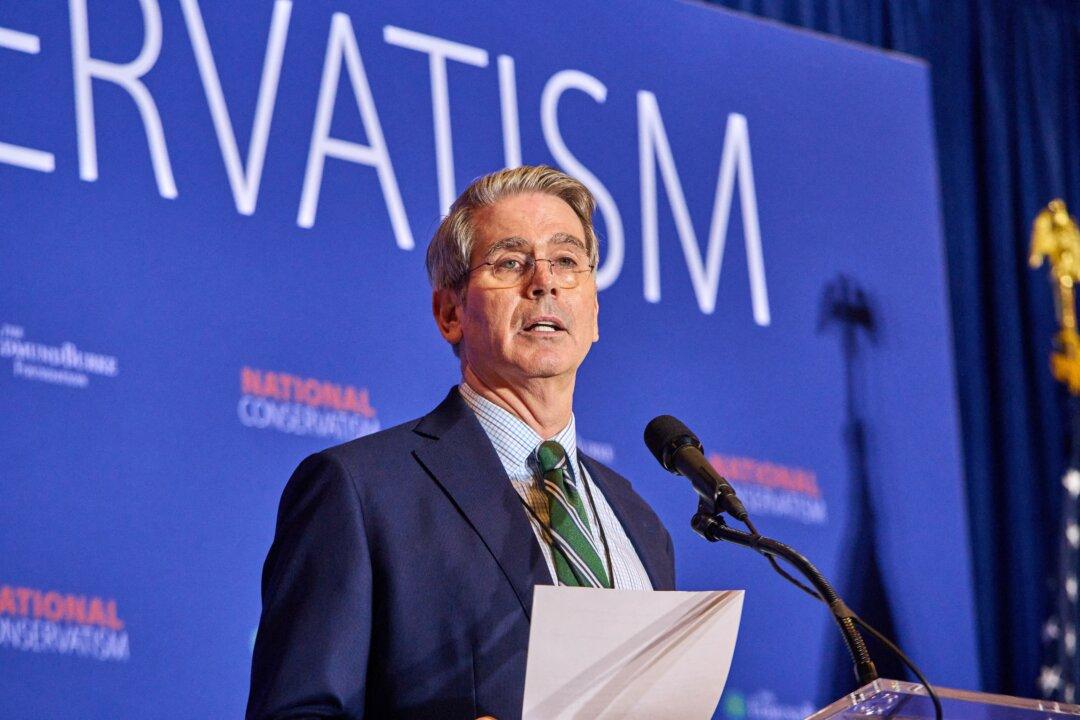The top headline numbers suggest that the U.S. economic recovery is humming along, although underlying issues throughout the economy are sparking concern among a growing number of economists and market analysts.
On the surface, the jobs market, consumer spending, and gross domestic product are improving. However, once you begin to scratch beneath the surface, there are plenty of problems threatening the post-pandemic infrastructure, experts warn.
The Labor Market
In November, the U.S. economy added 210,000 jobs, falling short of the market forecast of 550,000. The unemployment rate fell to a better-than-expected reading of 4.2 percent.Analysts are looking at the largest context of the jobs market.
While average hourly earnings rose 4.8 percent year-over-year, climbing to $31.03 per hour, real wage growth has been eliminated in most sectors of the economy because of surging inflation.
Job openings surged to nearly an all-time high of 11 million in October, as 4.2 million workers quit their jobs last month. The labor force participation rate remained near a five-decade low.

There are still 4 million to 6 million fewer jobs than before the pandemic. Moreover, a wide range of surveys suggests that employers are having trouble finding workers for unfilled jobs, with jobless benefits discouraging many of these workers.
Unit labor costs advanced 9.6 percent in the third quarter, but non-farm productivity slumped 5.2 percent during the same July-to-September period.
Some experts are anticipating other worrisome developments in 2022.
Researchers predict that President Joe Biden’s “Build Back Better” Act could potentially disincentivize work because of the many support provisions inside the legislation. For example, Casey Mulligan, a University of Chicago economist, forecasts that the president’s chief economic program would slash full-time equivalent employment by about 6 percent.
“The bill would implement the single largest permanent increase in work disincentives since the income tax came into its own during World War II,” Mulligan wrote in a report. “The bill would also reduce work by limiting competition in the labor market, imposing employer mandates, distorting childcare markets, and increasing consumer prices for telecommunications, energy, and other products. All of these disincentives go on top of those already in the baseline due to a continuing portfolio of federal, state, and local tax, spending, and regulatory policies.”
Still, some on Wall Street are optimistic about the current state of the labor market.
The Cost of Shelter
Last year, housing costs, including rent and utilities, accounted for about one-third of the average individual’s budget. Both components have risen significantly this year.
Rents for shelter surged 3.9 percent year-over-year in November. Electricity prices climbed 6.5 percent.
“While the pandemic saw a drastic decrease in rents, the trend quickly reversed as renters, both new and old, returned to cities,” the Apartment Guide stated.
This has industry observers calling this demographic “house poor” homeowners, households with small savings after covering their mortgage payments and related monthly costs.
Housing experts are split as to whether real estate prices will accelerate or slow down next year.
Home prices rose 19.5 percent in September year over year, down from a 19.8 percent increase in August, according to the S&P CoreLogic Case-Shiller.
What Do US Consumers Think?
The Federal Reserve Bank of New York (FRBNY) published the November Survey of Consumer Expectations on Dec. 13. The monthly snapshot highlighted that Americans don’t anticipate relief for their wallets in 2022.According to the November 2022 report, consumers believe inflation will stay at around 6 percent by the end of next year.
The median expectations for inflation in three years eased to 4 percent.
When asked if inflation or unemployment was the most pressing issue facing the country, 76 percent chose inflation, Richard Curtin, the survey’s director, noted.
On the labor front, the probability of losing employment over the next 12 months rose 13 percent, slightly below the pre-pandemic reading of 13.8 percent. More than one-third of people thought unemployment would be higher next year.

2022: Bullish or Bearish?
What lies ahead for the U.S. economy over the next year? It might depend on who is making the predictions.Goldman Sachs trimmed its GDP forecast for 2022, with the financial institution expecting growth to be 3.8 percent on a full-year basis. The biggest risk that could weigh on economic activity, the Wall Street giant says, is the Omicron variant.
“The emergence of the Omicron variant increases the risks and uncertainty around the U.S. economic outlook,” economists said in a note. “While many questions remain unanswered, we now think a moderate downside scenario where the virus spreads more quickly but immunity against severe disease is only slightly weakened is most likely.”
However, JPMorgan Chase thinks “2022 will be the year of a full global recovery,” citing greater immunity to COVID-19, new vaccines and drugs, and strengthening consumer demand and international mobility.
“Over the medium term, we expect the global economy will work to solve the problems that emerged in 2021,” Marko Kolanovic, JP Morgan’s chief global markets strategist, said in a report. “As the pandemic fades, consumers should redirect spending from goods and toward services.”
Meanwhile, the bank added that “supply-chain bottlenecks will alleviate and that globalization will keep the price of goods in check, as it has for the past two decades.”
Ultimately, based on various research notes and economists’ commentary, the success or failure of 2022 might hinge on the Omicron variant.





